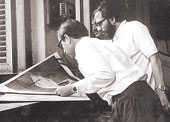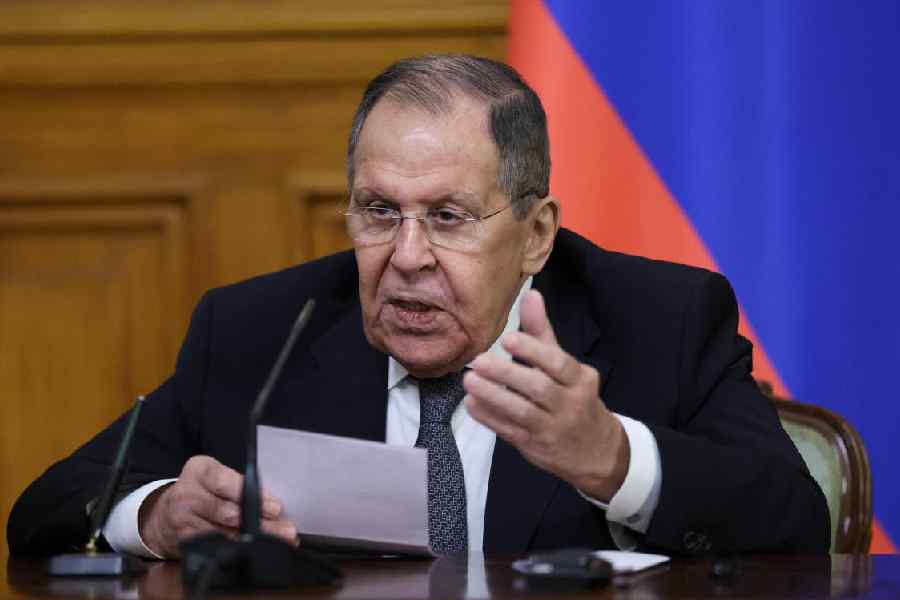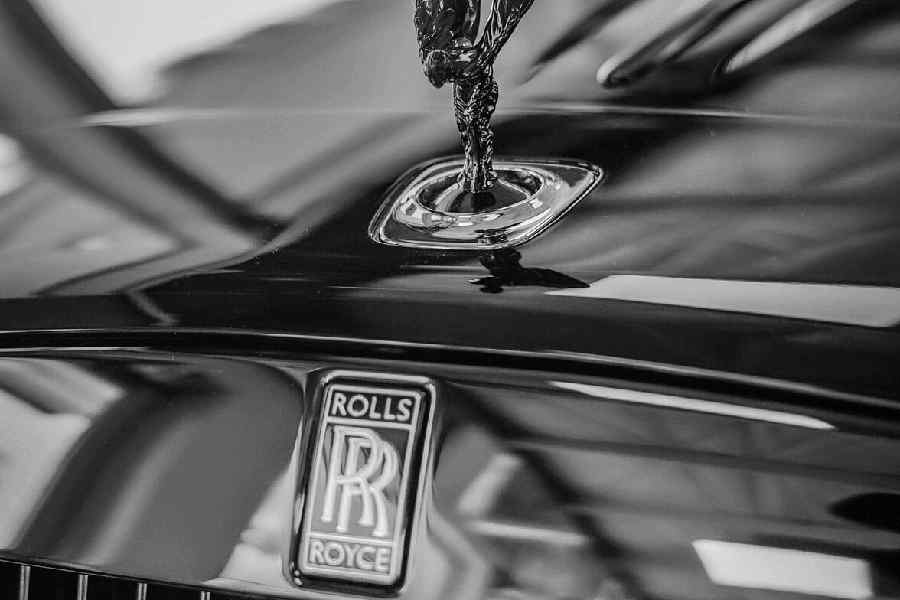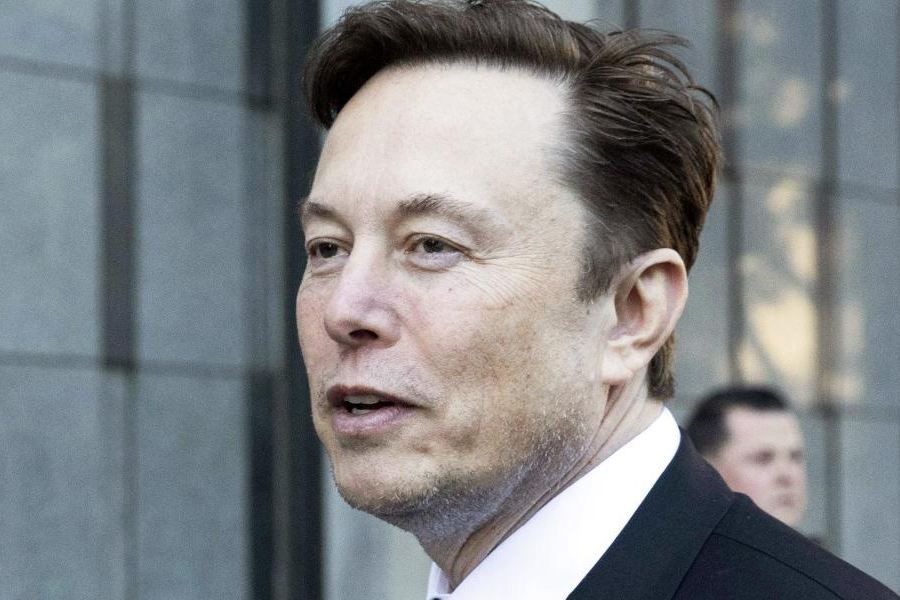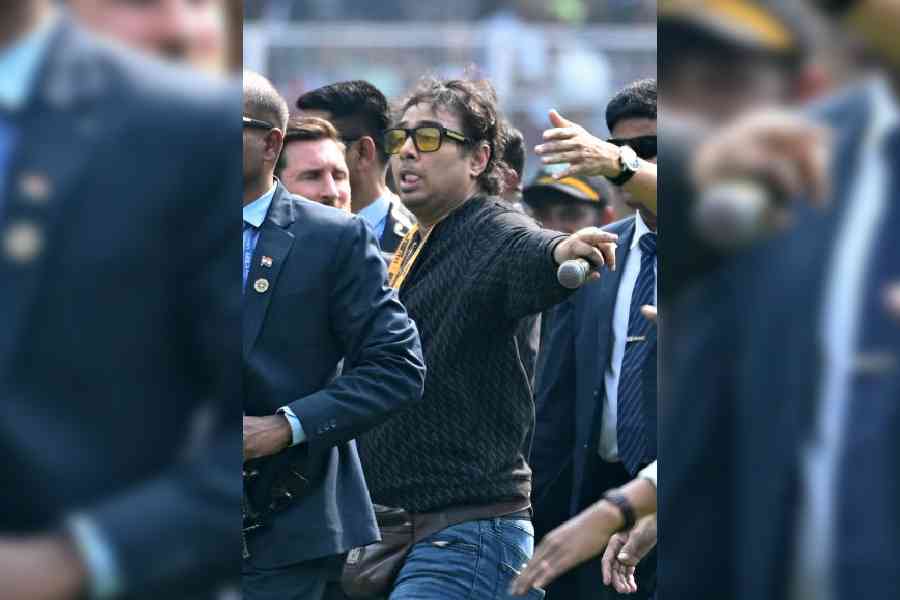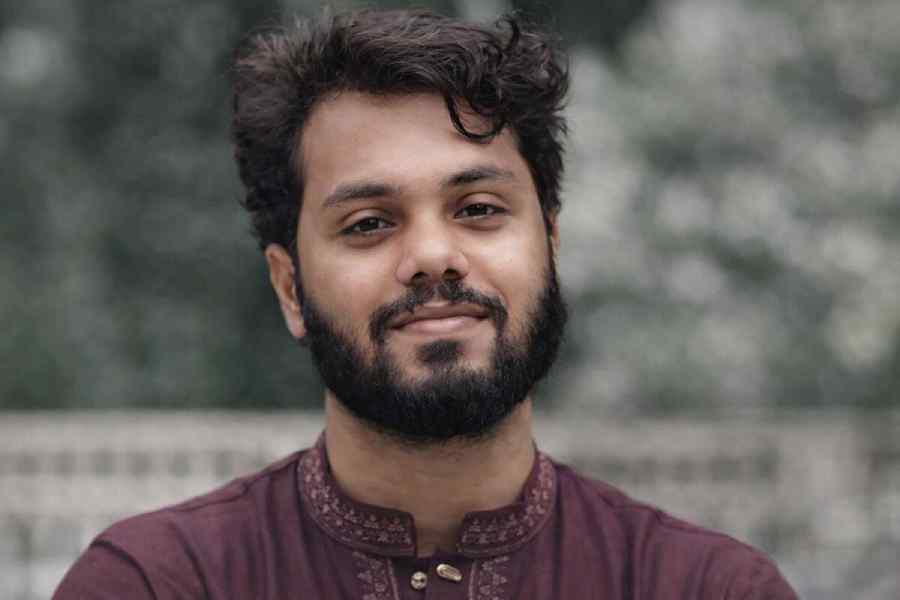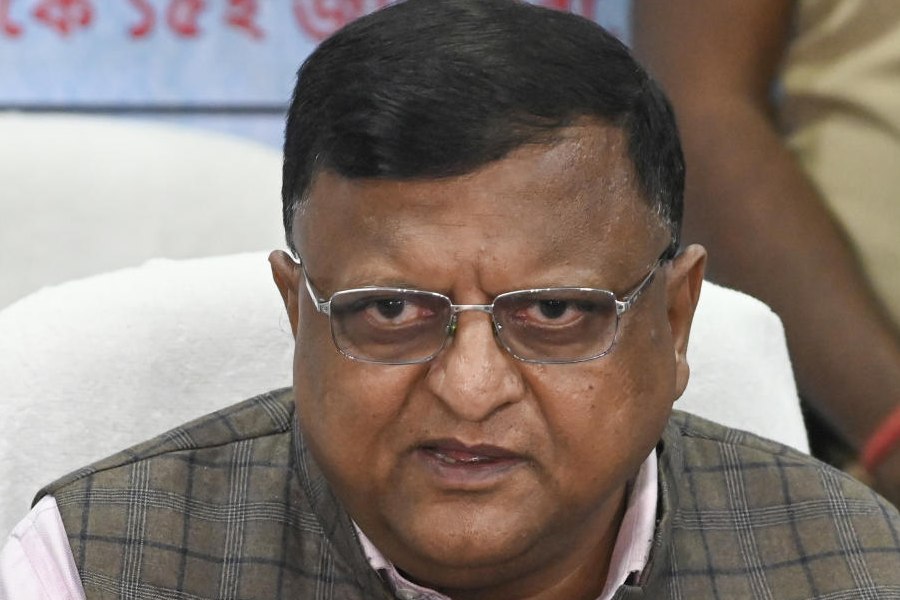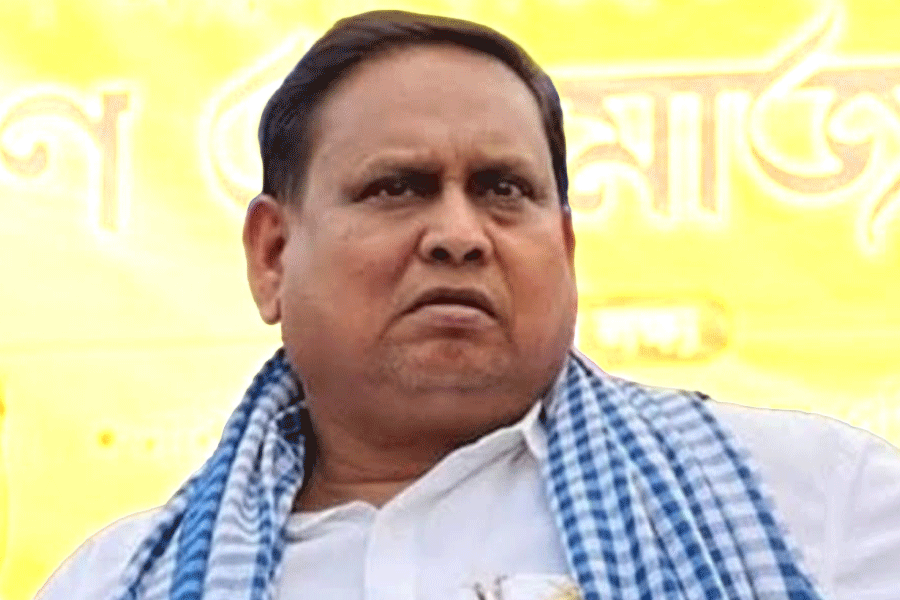 |
| Ganesh Haloi, Amitabha Banerjee and Lalu Prasad Shaw at the Dharamtala studio |
 |
| Late Shyamal Datta Ray works with a drill at the studio |
 |
| Late Shyamal Datta Ray, late Dharmanarayan Dasgupta, late Bikash Bhattacharjee (with camera), art critic Pranab Ranjan Roy, Sunil Das (white kurta pajama) and Ganesh Haloi (spectacles with black frame) at Chitrakoot gallery |
 |
| Pradip Maitra, late Bikash Bhattacharjee and late Shyamal Datta Ray at the studio |
Modern art happened in early 20th century. Yet the name has stuck on. The same with the Society of Contemporary Artists. It turns 50 on August 12, yet this organisation — possibly the only group of artists anywhere to have remained intact for so long — continues to be known by the same name, never mind that most of its founding members are in their 70s now and many have died.
Sanat Kar, 75, who was one of the artists who took the initiative of forming this society, says when he was in the second year of art college in 1951-52, no facilities existed for young artists. The Academy of Fine Arts had its own coterie of artists, so younger artists shunned it. The only two artists’ groups that existed then were Artists Circle formed by Arun Bose, Sukumar Datta, Raghunath Sinha, Sanat Kar and Neera Sen and some others and its exhibitions used to be held at 1 Chowringhee Terrace that belonged to Jatin Majumdar, an art lover who not only allowed the use of his premises gratis, but also served tea and snacks for nothing. Artists like Gopal Ghosh, Pradosh Dasgupta and Paritosh Sen and others held their exhibitions here.
The second association, Chitrangshu, was formed by Shyamal Datta Ray, Nikhil Biswas, and others. They too held their shows at the same venue. Those were days when there were only about two galleries in the country, no infrastructure existed for holding shows, and artists were too impoverished to mount exhibitions on their own.
There was a deeply felt need to create a platform for artists but only a few young artists were willing to take the initiative. Artists had congregated at Mahabodhi Society to form a union, but nothing came of it, says Kar.
After the Birla Academy of Art & Culture opened, artists tried to open a library and to hold shows with corporate aid. This too was a failed effort. Then Banga Sanskriti Sammelan was organised and Ahibhushan Malik, the famous art critic of Anandabazar Patrika, took the initiative of holding a big exhibition of all artists of Bengal. This proved to be a turning point in the fortunes of artists. Major artists like Rabin Mandal were discovered then.
The Society of Contemporary Artists was registered thereafter in 1960 with Nikhil Biswas and Sanat Kar as its first secretaries and historian Nihar Ranjan Roy as president. The first meeting of the society was held at the home of Anil Baran Saha at 7A Mysore Road, and the first exhibition was held at Artistry House. It had about 20-25 members and its name was suggested by Sukanta Bose. Saha’s house served as the group’s office, and Somnath Hore’s exhibition was mounted there.
Subsequently, members like Sarbari Roy Chaudhury, Bijan Chaudhuri and Prakash Karmakar walked out owing to differences in opinion. Nevertheless, the organisation flourished.
They approached Lalit Kala Akademi and its chairman, Bhabesh Sanyal, for funding. This was granted and a printing press was acquired from Jiben Sen, who had brought it from Poland. A studio opened at what used to be the studio of Ajit Chakrabarty in Dharamtala at 157B Lenin Sarani. Chakrabarty had just returned from what was then Czechoslovakia, and he brought back woodcuts and etchings. These were exhibited at Artistry House, located on the spot where Park Hotel came up later. Suhas Roy says the society was successful because all artists irrespective of status worked on an equal footing here.
Lalu Prasad Shaw, who joined in 1967, says without the society it would have been difficult for Bengal artists to develop an individual viewpoint that distinguished them from others. The etching studio started in 1963-64 and the artists worked on a trial-and-error basis. Shaw describes this as the “golden period” of the society, and this was when he did some of his abstract graphics.
Somnath Hore, Ganesh Pyne (he quit later), Bikash Bhattacharjee, Dharmanarayan Dasgupta were at one time its members, and Arun Bose returned from Heyter’s studio in Paris and began to teach viscosity. Suhas Roy says he learnt the use of colour in printmaking from Arun Bose, and later he himself went to Heyter’s studio. The printmaking studio that still survives is one of the oldest in the country. Shaw, however, regrets the lack of awareness about graphic arts in spite of these efforts.
Ganesh Haloi, who joined in 1970, says the art market began to look up in 1980 and people in Calcutta who loved art used to look forward to the Society’s annual exhibitions which became more like festivals. Young artists became inspired by Ganesh Pyne and Bikash Bhattacharjee and many wannabes surfaced.
Many of its well-known members like Dharmanarayan Dasgupta and Shyamal Datta Roy have been dead for years now, yet the younger members have kept it in good health. The Society of Contemporary Artists begins its golden jubilee celebrations with an exhibition at Akar Prakar from August 12. A series of shows will follow as part of the year-long festivity.

